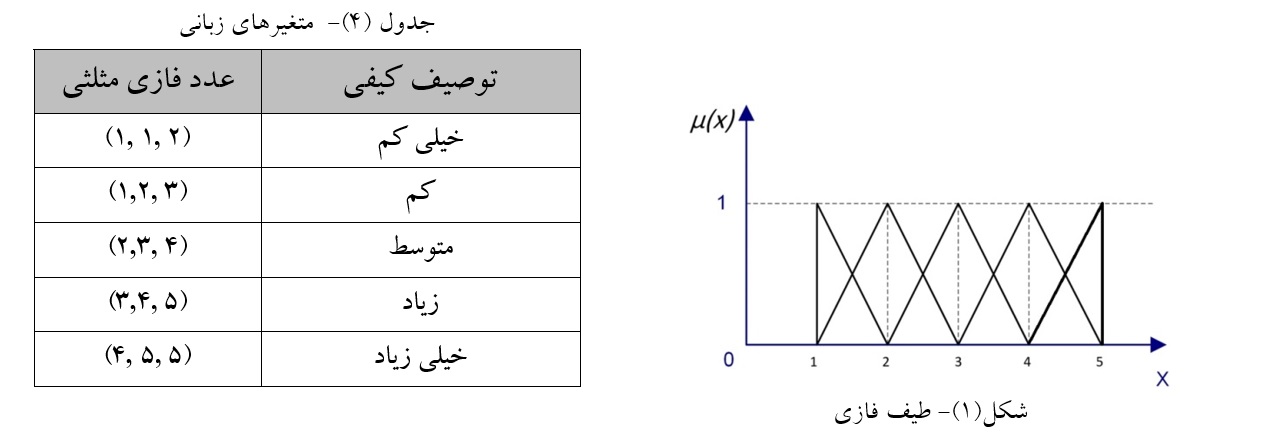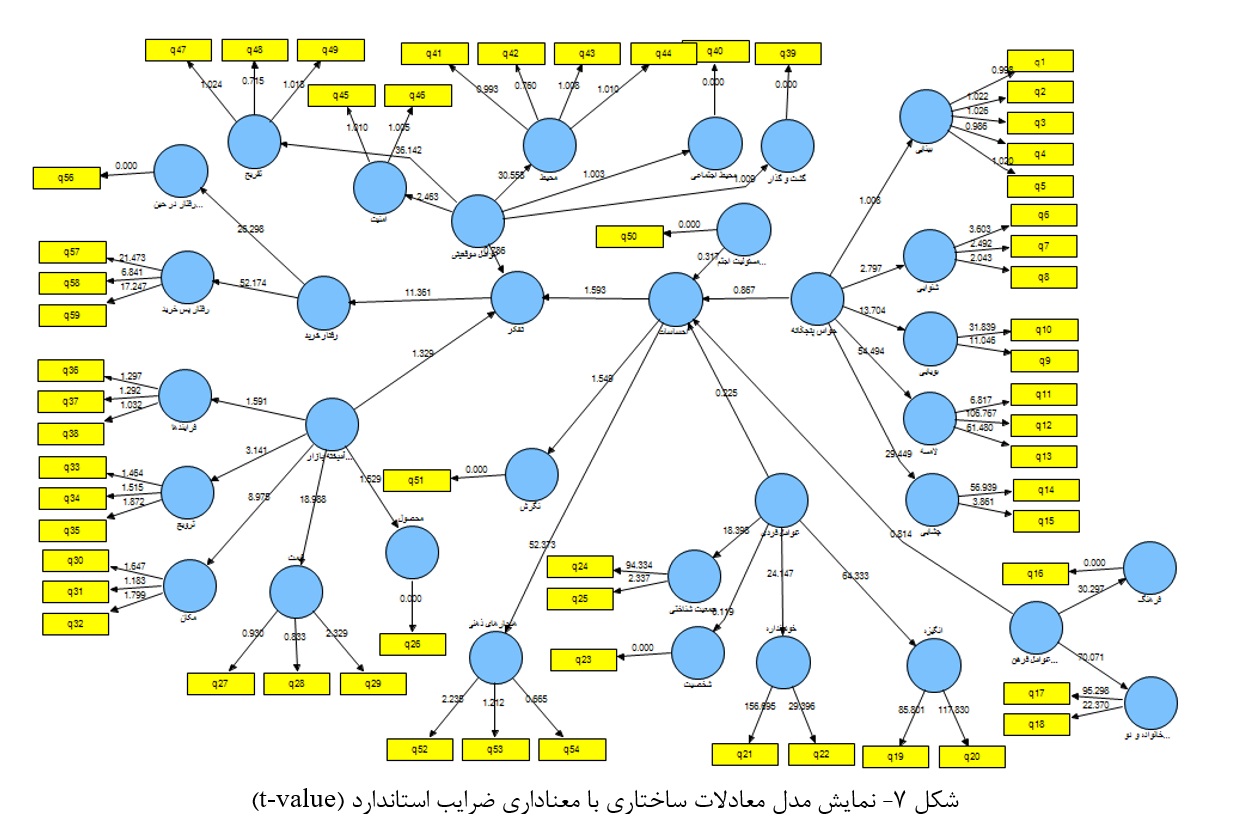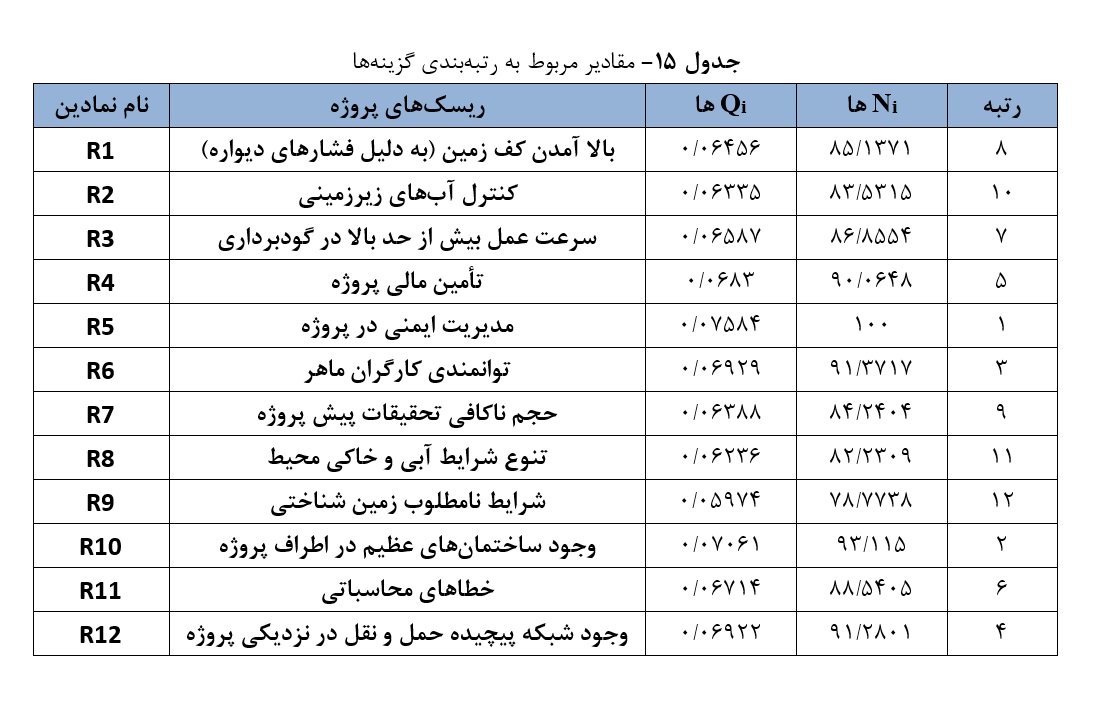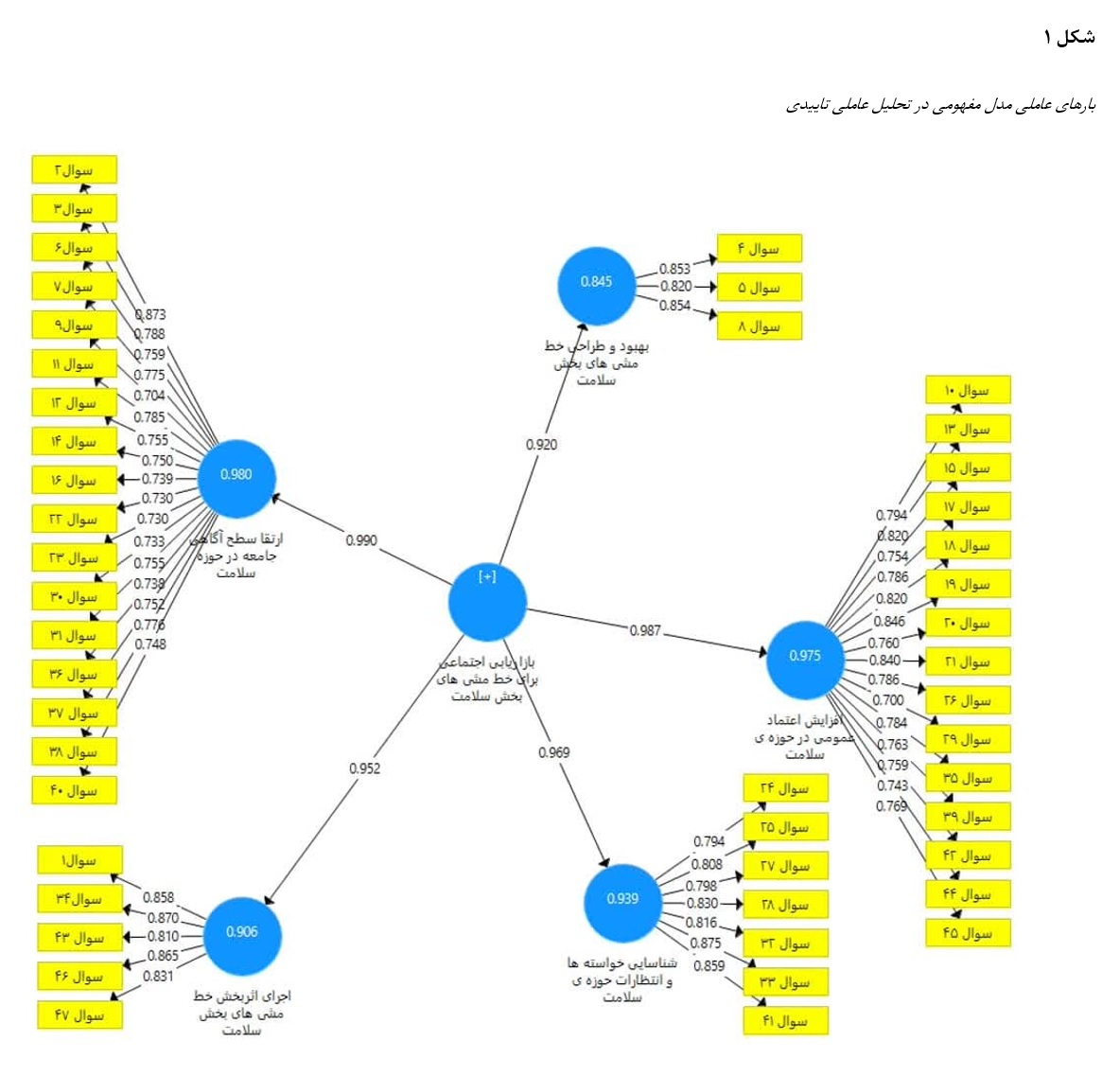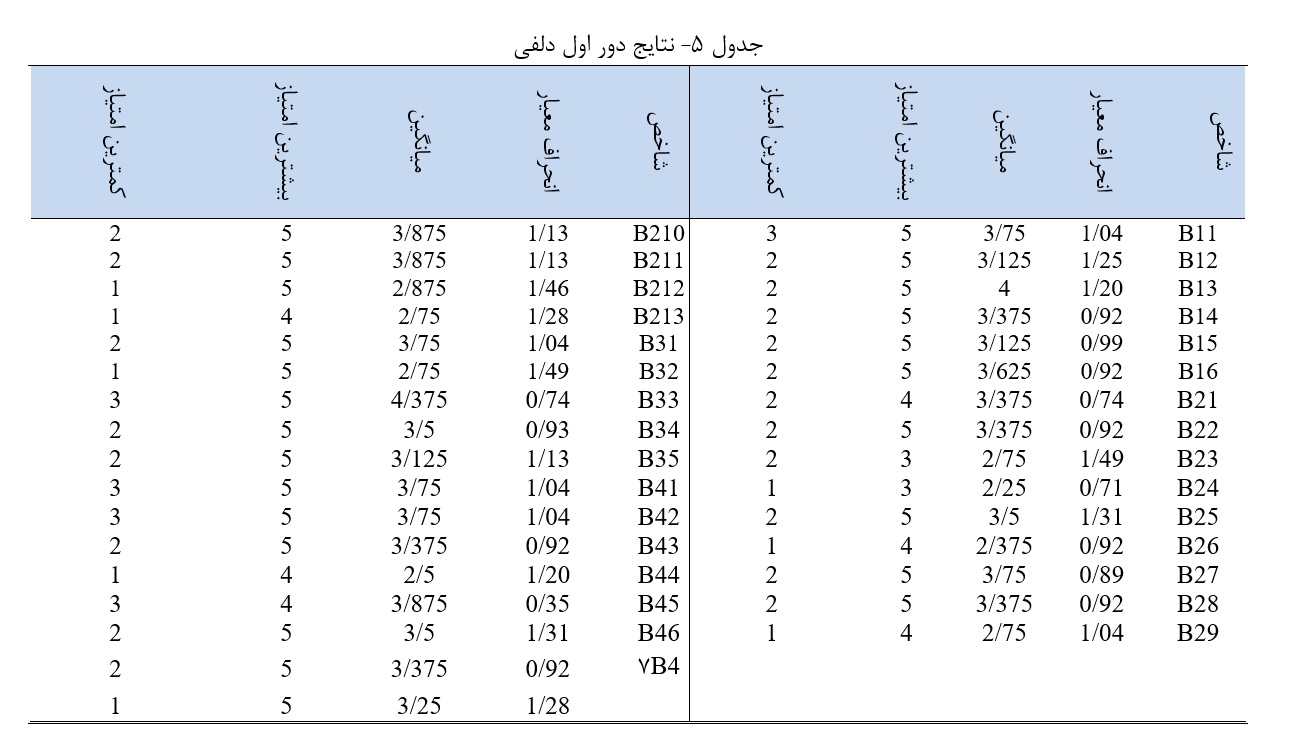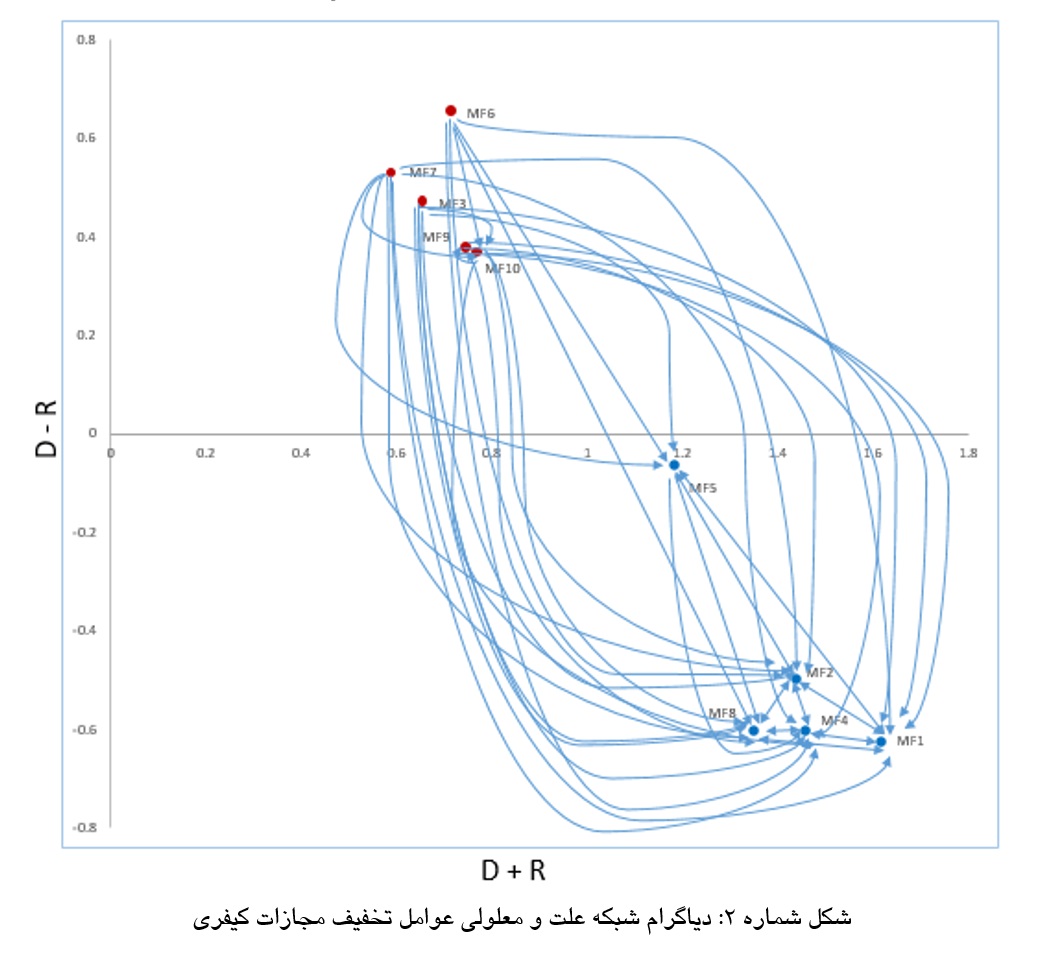مروری بر پژوهشهای انجام شده در ارزیابی عمکرد صندوقهای بازنشستگی با استفاده از تحلیل پوششی دادهها
در این پژوهش شرحی از روشهای مبتنی بر تحلیل پوششی دادهها از جمله روشهای CCR، BCC، SBM، تحلیل پوششی با دادههای ترکیبی (MV-DEA) و یک روش شبکهای دومرحلهای بیان میشود. همچنین انواع صندوقهای بازنشستگی از دیدگاههای مختلف از جمله صندوقهای بازنشستگی مزیت معین و مشارکت معین و ترکیبی، خصوصی و دولتی، باز و بسته، صندوقهای با مسئولیت اجتماعی (اخلاقی) و مسئولیتناپذیر، صندوقهای مستقل، نیمهمستقل و کامل معرفی میشود. با مرور پژوهشهای مختلف که در آن با استفاده از روشهای تحلیلی یاد شده، میزان کارایی هر یک از انواع صندوقها با سایر صندوقها مقایسه شده و عملکرد آنها مورد ارزیابی قرار گرفته، نتایج بدست آمده را مورد بررسی قرار میدهیم. این پژوهشها در کشورهای مختلف با ساختارهای اقتصادی متفاوت انجام شده است. نتایج بدست آمده در پژوهشها متنوع هستند. با مشاهده نتایج بهدستآمده درمییابیم که یکی از علتهای تنوع در نتیجهگیریها میتواند تفاوت در انتخاب دادههای ورودی و خروجی برای هر پژوهش باشد. همچنین ساختارهای فرهنگی و سیاسی متفاوت در مناطق مختلف نیز میتواند در نتایج بدست آمده مؤثر باشد.
مدلسازی ریاضی برنامهریزی تولید دادهمحور با رویکرد چندهدفه و یادگیری ماشین در صنعت زیستدارو: ترکیب پیشبینی تقاضا و بهینهسازی پایدار
صنعت زیستدارو بهعنوان یکی از مهمترین بخشهای نوین دارویی، با چالشهای متعددی همچون نوسانات تقاضا، محدودیت منابع، فرآیندهای تولید پیچیده و الزامات زیستمحیطی روبهرو است. در چنین فضایی، رویکردهای دادهمحور و هوشمحور میتوانند نقشی کلیدی در ارتقای دقت تصمیمگیری، پایداری و سودآوری ایفا کنند. پژوهش حاضر با هدف توسعه یک چارچوب جامع برای برنامهریزی تولید پایدار، به ترکیب پیشبینی تقاضا با مدلسازی ریاضی چندهدفه پرداخته است. در گام نخست، دادههای واقعی مربوط به ۹ داروی منتخب طی ۳۶ ماه گردآوری شد و با استفاده از شبکه عصبی مصنوعی (ANN) و حافظه بلندمدت کوتاهمدت (LSTM) الگوهای تقاضا پیشبینی گردید. نتایج نشان داد مدل ANN با خطای RMSE برابر با ۸۶۸ توانست روندهای تقاضا را با دقت متوسط بازسازی کند، در حالیکه مدل LSTM توانست میانگین تقاضا را با خطایی کمتر از یک درصد در سطح دارو–سناریو تخمین بزند. در مرحله دوم، یک مدل ریاضی چندمحصولی و چندهدفه طراحی گردید که اهداف اقتصادی (بیشینهسازی سود و کاهش هزینهها) و زیستمحیطی (کاهش آلایندگی و ضایعات) را بهصورت همزمان در نظر گرفت. برای حل مدل، از الگوریتمهای ژنتیک (GA) و ازدحام ذرات (PSO) به همراه روش اپسیلون–محدودیت برای استخراج جبهه پارتو استفاده شد. یافتهها نشان داد GA در همگرایی سریعتر و PSO در جستجوی گستردهتر فضای جواب برتری نسبی دارند. همچنین تحلیل حساسیت چندمتغیره آشکار ساخت که ظرفیت تولید، هزینه مواد اولیه و نرخ آلایندگی بیشترین تأثیر را بر نتایج دارند. این تحقیق با پر کردن شکاف میان پیشبینی تقاضا و بهینهسازی تولید، چارچوبی عملی برای تصمیمسازی هوشمند در صنعت زیستدارو ایران ارائه میدهد و میتواند به افزایش تابآوری زنجیره تأمین، کاهش هزینهها و تحقق اهداف توسعه پایدار کمک نماید.
طراحی سیستم خودارزیابی بر اساس خطبه متقین و بررسی ارتباط بین بخشهای مختلف خطبه
این مقاله به معرفی و طراحی یک سیستم خودارزیابی محرمانه بر اساس خطبه همام میپردازد که هدف آن سنجش میزان تطابق افراد با ویژگیهای متقین ذکر شده در این خطبه است. سیستم مذکور از یک پرسشنامه جامع بهره میبرد که شامل جملاتی است که بر ویژگیهای اخلاقی، روحی و رفتاری متمرکز میباشد و به کاربران اجازه میدهد تا خود را بر اساس معیارهای ایمانی و دینی ارزیابی کنند. کاربران امتیازات خود را بر اساس مقیاس 1 (هیچوقت) تا 5 (همیشه) به جملههای مرتبط با رفتارهای نظیر صداقت، تواضع، پرهیز از اسراف، و عبادت شبانه اختصاص میدهند. روششناسی سیستم شامل سه مرحله اصلی است. مرحله اول جمعآوری دادهها و ارزیابی میباشد. پرسشنامهای متشکل از عبارات مشخص، نظیر پرهیز از افراط و نیکی در سخن گفتن، توسعه یافته و افراد پاسخهای خود را به صورت کمی ارائه میدهند. امتیازات افراد با جمعبندی نمرات سوالات محاسبه میشود. مرحله دوم تحلیل نتایج است که در آن نمرات کلی هر فرد با حداکثر نمره ممکن (200) مقایسه شده و درصد تطابق کاربر با معیارهای خطبه محاسبه میشود. نتایج به صورت یک عدد طبیعی بین 0 تا 100 به کاربر ارائه میشود و کمترین نمرات در رفتارها و ویژگیهایی که نیاز به بهبود دارند به همراه احادیثی از منابع مختلف برای راهنمایی و تأمل بیشتر ارائه میگردد. مرحله سوم ارائه پیشنهادات بهبود میباشد. در صورت وجود نمرات پایین، پیشنهاداتی برای بهبود یا تأمل در صفات مذکور به کاربر داده میشود. این فرآیند امکان تقویت افتخارات اخلاقی و معنوی کاربران را فراهم میآورد. در پایان نیز به کمک جمع آوری پاسخ برای پرسشنامه و محاسبه ضریب همبستگی، بیشترین ارتباط بین پرسشهای مربوط به عبادت و پرسشهای مربوط به پرهیزکاری پیدا شد. این پروژه با هدف تشویق افراد به بهبود صفات معنوی و ارائه روشهای عملی برای ارتقاء شخصیتی تدوین شده است و میتواند به عنوان یک ابزار مفید برای جامعه به کار گرفته شود.
مدل توسعه سیستم هوش تجاری بر پایه اهداف استراتژیک و فرآیندهای سازمانی
هدف: این پژوهش با هدف ارائه مدلی نظام مند برای توسعه سیستم های هوش تجاری بر پایه اهداف استراتژیک و فرآیندهای سازمانی انجام شده است.
روش: این پژوهش از نوع توصیفی و جامعه آماری تحقیق را مدیران صنایع تولیدکننده پمپ و الکتروموتور تشکیل می دهد. پژوهش در سه مرحله برنامه ریزی و اجرا گردید، در مرحله نخست، اهداف استراتژیک سازمان از نظر امکان مشارکت در سیستم های هوش تجاری مورد ارزیابی قرار گرفتند. برای این ارزیابی، از چهار معیار اصلی برگرفته از پژوهش پیشین و از روش آماری آنتروپی شانون استفاده گردید و امکان مشارکت هر یک از اهداف در سیستم هوش تجاری، سنجیده شد. ابتدا وزن معیارها محاسبه و سپس امتیاز اهداف تعیین شد. اهداف با امتیاز بالاتر از 0.8 ، بهعنوان گزینههای مناسب برای مشارکت در طراحی (BI) انتخاب شدند. در مرحله دوم، ماتریسی طراحی شد تا تأثیر گروههای فرآیندی بر اهداف منتخب بررسی شود. در این مرحله بدلیل عدم قطعیت در دادهها، تحلیل اطلاعات با بهرهگیری از منطق فازی انجام گرفت. در نتیجه این تحلیل، فرآیندهای اثرگذار بر اهداف استراتژیک استخراج شدند. در مرحله سوم، شاخصهای کلیدی عملکرد (KPI) مرتبط با فرآیندها و اهداف منتخب شناسایی شدند. سپس با استفاده از تکنیک دلفی و طی پنج مرحله ، شاخصهای مؤثر انتخاب گردیدند.
یافته ها: یک چارچوب عملیاتی برای طراحی سیستم هوش تجاری همتراز با اهداف استراتژیک و فرآیندهای سازمانی ارائه گردید.
نتیجه گیری: با شناسایی اهداف قابل پشتیبانی توسط هوش تجاری و بهکارگیری متدولوژی پیشنهادی، امکان پایش تحقق اهداف استراتژیک فراهم شده به ارتقاء بهرهوری سازمان میانجامد.
تحلیل کارایی و رشد بهرهوری صنعت بیمه ایران: رویکرد مبتنی بر تحلیل پوششی دادهها
صنعت بیمه یکی از ارکان حیاتی نظام مالی بهشمار میرود که با ایفای نقش در مدیریت ریسک، ارتقای تابآوری اقتصادی و تسهیل سرمایهگذاری، اهمیت فزایندهای در اقتصادهای نوظهور و پرتلاطم مانند ایران دارد. پژوهش حاضر با هدف ارزیابی عملکرد و تحلیل روند بهرهوری شرکتهای بیمه در ایران طی سالهای ۱۳۹۶ تا ۱۴۰۲، از رویکرد تحلیل پوششی دادهها (DEA) بر پایه مدل غیرشعاعی راسل و شاخص بهرهوری مالمکوئیست بهرهگیری کرده است. همچنین اثرگذاری متغیرهای زمینهای نظیر سرمایه، تعداد شعب و قدمت شرکتها بر کارایی با استفاده از مدل رگرسیون خطی مورد بررسی قرار گرفته است. برای این منظور از نرم افزار گمز استفاده شده است. یافتهها نشان میدهد که طی بازه مورد بررسی، صنعت بیمه ایران با روندی ناپایدار و عمدتاً نزولی در کارایی مواجه بوده است، بهویژه در سالهای بحرانی مانند 1400-۱۴۰۱ که افت چشمگیری در شاخصهای فناوری و بهرهوری مشاهده شده است. با این حال، در برخی سالها نشانههایی از بازیابی عملکرد و ظرفیت بالقوه برای رشد دیده میشود. نتایج همچنین حاکی از آن است که افزایش سرمایه بهتنهایی تضمینی برای ارتقاء کارایی نبوده و ساختارهای سنتی یا غیربهرهور مانع از استفاده بهینه از منابع شدهاند.
تحلیل تأثیر بازاریابی حسی بر رفتار خرید بانوان: مطالعهای ترکیبی با روش دادهبنیاد و مدلسازی معادلات ساختاری
در این تحقیق به ارائه الگوی خرید بانوان بر اساس بازاریابی حسی پرداخته شده است. روش تحقیق از نظر هدف کاربردی و از لحاظ رویکرد، اکتشافی و تبیینی میباشد. با توجه به این که تحقیق حاضر از نوع آمیخته، اکتشافی و تبیینی است، برای انجام آن از روش آمیخته در دو فاز کیفی و کمی بهره گرفته شد. در فاز اول، با استفاده از رویکرد استقرائی و استفاده از روش کیفی از طریق تحلیل محتوا و اجرای تئوری داده بنیاد اقدام به شناسایی 9 متغیر و 27 مؤلفه مؤثر بر الگوی خرید بانوان بر اساس بازاریابی حسی در قالب شـرایط علی، شرایط محوری، شـرایط زمینه، شـرایط مداخلـهگر، استراتژیها و پیامدها، شد. سپس در فاز دوم، به صورت کمی اقدام به تائید ابعاد و مؤلفهها و در نهایت تائید مدل مفهومی توسعهیافته در فاز کیفی گردید. اطلاعات مورد نیاز در فاز کیفی از طریق مصاحبه با 13 نفر از کارشناسان و خبرگان بازاریابی و رفتار مصرفکننده که تعداد آنها به روش نمونهگیری گلوله برفی هدفمند تعیین گردید، جمعآوری شد. همچنین، در بخش کمی، دادههای مورد نیاز از طریق توزیع پرسشنامه محقق ساخته در بین 151 تن از مشتریان زن مراکز تجاری کیش، که به روش کوکران تعیین گردید، گردآوری شد. در این تحقیق، جهت طراحی و اجرای مدل تبیین شده، از تکنیک مدلسازی معادلات ساختاری با نرمافزار pls جهت آزمودن مدل کیفی، استفاده شد. نتایج حاصل از مدلسازی معادلات ساختاری نشان داد، حواس پنجگانه در سطح اطمینان 95 درصد اثر معناداری بر احساسات دارد. اما، عوامل فرهنگی - اجتماعی و عوامل فردی و روانشناختی اثر معناداری بر احساسات ندارد. از طرفی، احساسات در سطح اطمینان 95 درصد اثر معناداری بر قصد خرید دارد. همچنین، عناصر آمیخته بازاریابی و عوامل موقعیتی در سطح اطمینان 95 درصد اثر معناداری بر قصد خرید داشته؛ و مسئولیتهای اجتماعی نیز اثر معناداری بر قصد خرید ندارد؛ اما، قصد خرید در سطح اطمینان 99 درصد اثر معناداری بر رفتار خرید دارد.
ارزیابی ریسک گودبرداری عمیق پروژههای ساختمانی با رویکرد ترکیبی سوارا-کوپراس در محیط فازی
امروزه و با توسعه زندگی شهری در اقصی نقاط جهان، توسعه فعالیتهای ساختوساز در بخشهای مختلف شهری اعم از پروژههای بلندمرتبهسازی تا پروژههای توسعه خطوط مترو، امری بهشدت ملموس و البته اجتنابناپذیر است. این پژوهش در جهت ارزیابی ریسک گودبرداری عمیق پروژههای ساختمانی انجام گرفته است. در این مطالعه بهمنظور شناسایی شاخصهای ارزیابی ریسک و نیز رتبهبندی ریسکهای مرتبط با پروژه، از رویکرد ترکیبی سوارا و کوپراس در محیط فازی استفاده گردیده است. محیط پژوهش پروژه گودبرداری عمیق بیمارستان آتیه غرب در شهر تهران بوده و دادههای مورد نیاز از خبرگان این پروژه در فاز گودبرداری گردآوری شده است. مبتنی بر تحلیل دادههای پژوهش در دو گام مختلف آن، نخست معین گردید که 11 شاخص ارزیابی ریسک، مهمترین شاخصها در زمینه سنجش ریسکهای فعالیتهای گودبرداری عمیق را شکل میدهند که در میان این شاخصها، شاخصهای قابلیت تحلیل ریسک، میزان منحصربهفرد بودن ریسک و میزان آسیبپذیری پروژه از ریسک بهعنوان مهمترین شاخصهای ارزیابی ریسکهای پروژههای گودبرداری عمیق شناسایی گردید. بهعلاوه مبتنی بر گام دوم تحلیل، اینگونه شناسایی گردید که پروژه گودبرداری بیمارستان آتیه غرب دربردارنده 12 ریسک کلیدی و اصلی میباشد. رویکرد کوپراس فازی نشان میدهد که در میان این ریسکها، سه ریسک مدیریت ایمنی در پروژه، وجود ساختمانهای عظیم در اطراف پروژه و توانمندی کارگران ماهر بهعنوان سه ریسک کلیدی شناسایی گردیده و بعد از این عوامل نیز سه عامل مهم دیگر شامل وجود شبکه پیچیده حملونقل در نزدیکی پروژه، تأمین مالی پروژه و خطاهای محاسباتی احتمالی از دیگر ریسکها مهم در این پروژه بودند. در ادامه نیز پیشنهادها و راهکارهایی در جهت کاستن از ریسکهای پروژههای گودبرداری مشابه در آینده مبتنی بر نظرات خبرگان و استانداردهای موجود ارائه شده است.
پیشبرد پایداری در زنجیره تامین غذا: موانع بکارگیری مدل محصول به عنوان خدمت با تاکید بر نقش فناوری
مدل محصول به عنوان خدمت به عنوان یک راهکار نوآورانه در زنجیره تأمین مواد غذایی، به کسبوکارها اجازه میدهد به جای خرید و مالکیت تجهیزات، از خدمات مبتنی بر فناوریهای دیجیتال مانند اینترنت اشیا و بلاکچین بهرهبرداری کنند. بکارگیری این مدل کسب و کار باعث افزایش انعطافپذیری و پایداری زنجیره تامین خواهد شد. با این حال، پیادهسازی این مدل در کشورهای در حال توسعه با چالشهای متعددی مواجه است. این پژوهش به بررسی موانع اصلی پیادهسازی مدل محصول به عنوان خدمت در زنجیره تأمین مواد غذایی در ایران پرداخته و آنها را در چهار دسته اصلی شامل موانع مالی، فنی، قانونی و اجتماعی-فرهنگی تقسیمبندی میکند. نتایج این پژوهش نشان میدهد که کمبود زیرساختهای دیجیتال، هزینه بالای اجرای فناوری، و عدم وجود سیاستهای حمایتی دولتی از جمله موانع اساسی برای پذیرش این مدل هستند. همچنین، ترجیح فرهنگی به مالکیت دارایی و بیاعتمادی نسبت به شرکتهای خارجی به عنوان موانع اجتماعی-فرهنگی برجسته شناسایی شدند که مانع از پذیرش این مدل توسط جوامع محلی میشوند. برای غلبه بر این موانع، ارائه راهکارهایی همچون توسعه زیرساختهای دیجیتال، ارائه تسهیلات مالی و یارانههای دولتی، آموزش و آگاهیبخشی جوامع محلی، و مشارکت آنها در فرآیندهای تصمیمگیری پیشنهاد شده است. این پژوهش با ارائه راهکارهایی برای برطرف کردن موانع مذکور، نشان میدهد که مدل محصول به عنوان خدمت میتواند به بهبود کارایی زنجیره تأمین مواد غذایی در کشورهای در حال توسعه کمک کرده و به کاهش ضایعات غذایی، افزایش پایداری و کاهش هزینههای عملیاتی منجر شود.
دربارهی مجله
درباره ما
مجله علم تصمیم گیری و سیستم های هوشمند یک مجله علمی پیشرو است که به پیشرفت زمینه های علم تصمیم گیری و سیستم های هوشمند با کمک ابزار تحقیق در عملیات (OR)، تحلیل پوششی داده ها (DEA) و مدل سازی ریاضی اختصاص دارد. ما مقالات اصیل و مروری در این زمینه را منتشر می کنیم که به درک نظری و عملی این رشته ها کمک می کند.
ماموریت ما
ماموریت ما این است که بستری را برای محققان و دست اندرکاران به منظور انتشار یافته های پیشرفته خود و تقویت همکاری در جامعه علمی فراهم کنیم. هدف ما ارتقای نوآوری، دقت و بکارگیری روشهای علمی برای حل مشکلات دنیای واقعی است.
محدوده پوشش
این مجله طیف گسترده ای از موضوعات را پوشش می دهد، از جمله:
تحلیل تصمیم گیری و بهینه سازی
یادگیری ماشین و هوش مصنوعی
مدیریت عملیات و تدارکات
تحلیل پوششی داده ها و ارزیابی عملکرد
مدل سازی و شبیه سازی ریاضی
برنامه های کاربردی در حوزه های مختلف، مانند مراقبت های بهداشتی، مالی و ...
مخاطب
این مجله برای محققان، دانشگاهیان، متخصصان صنعت و سیاست گذاران علاقه مند به آخرین پیشرفت ها و کاربردهای علم تصمیم گیری و سیستم های هوشمند مورد مطالعه قرار می گیرد.
فرآیند ویرایش
مجله برای اطمینان از کیفیت و اصالت همه مقالات منتشر شده، از یک فرآیند بررسی دقیق پیروی می کند. هر نسخه خطی توسط متخصصان این حوزه مورد بررسی قرار می گیرد. هیئت تحریریه متشکل از اساتید مشهور و پیشروان صنعت است که راهنمایی و پشتیبانی از اهداف مجله را بر عهده دارند.
مجله ما از مقالات ارسالی محققان در سراسر جهان استقبال می کند و از شما دعوت می کنیم که کار خود را در علوم تصمیم گیری و سیستم های هوشمند در مجله ما منتشر کنید.
شماره کنونی

